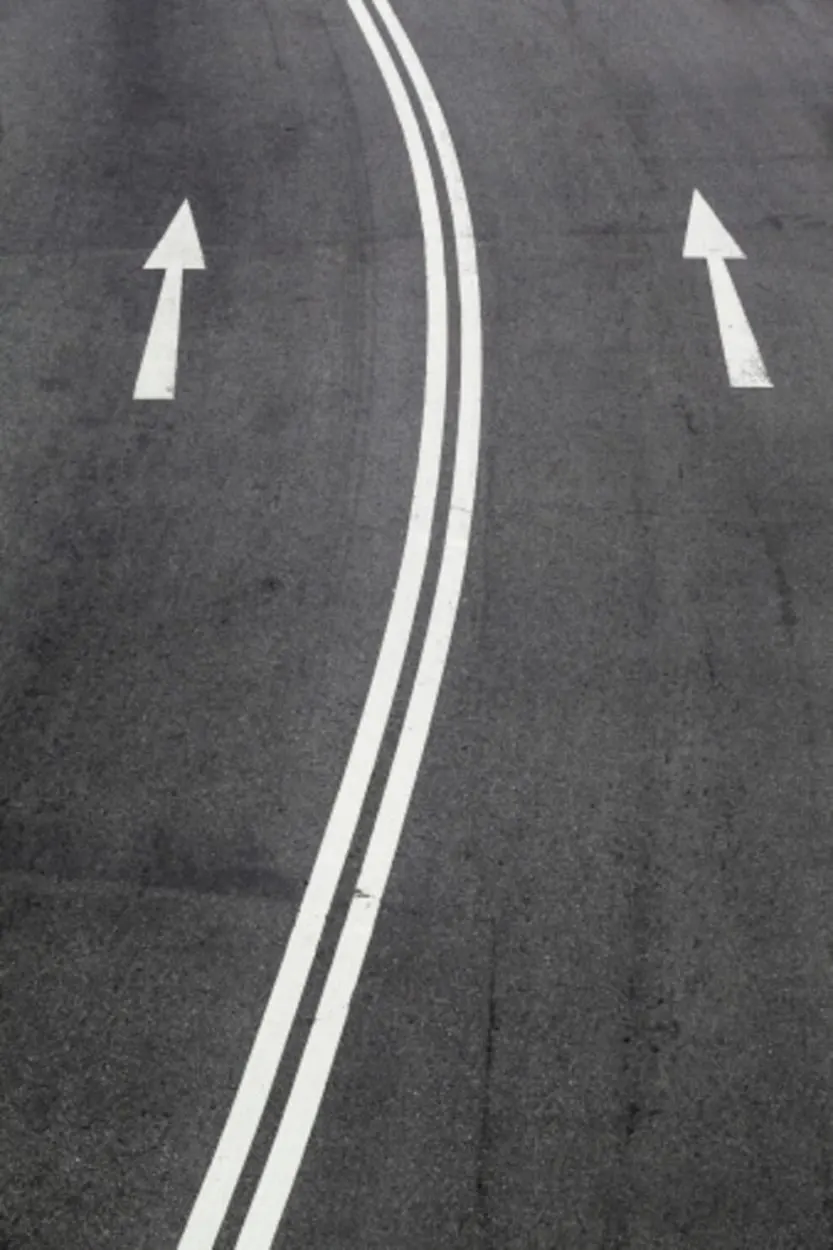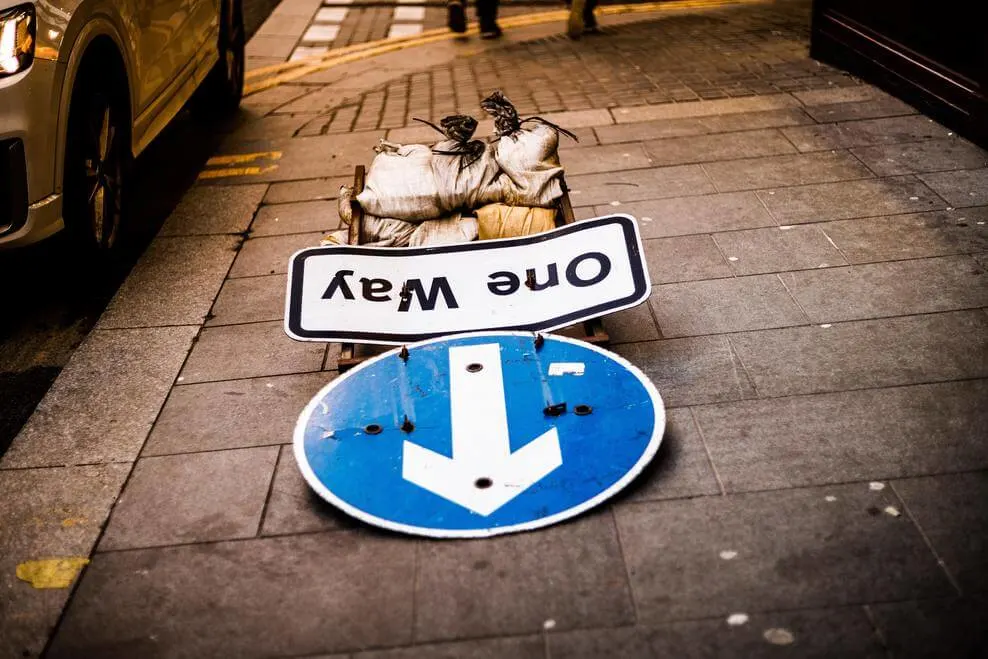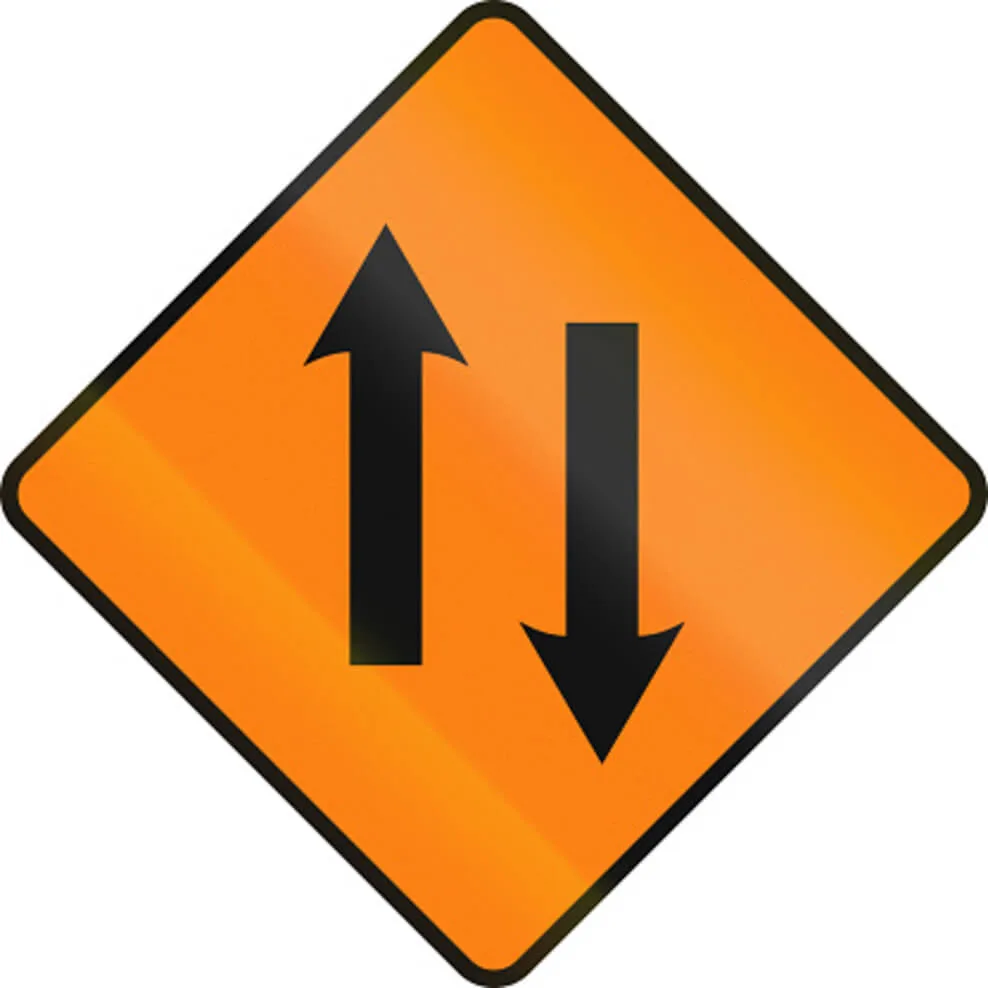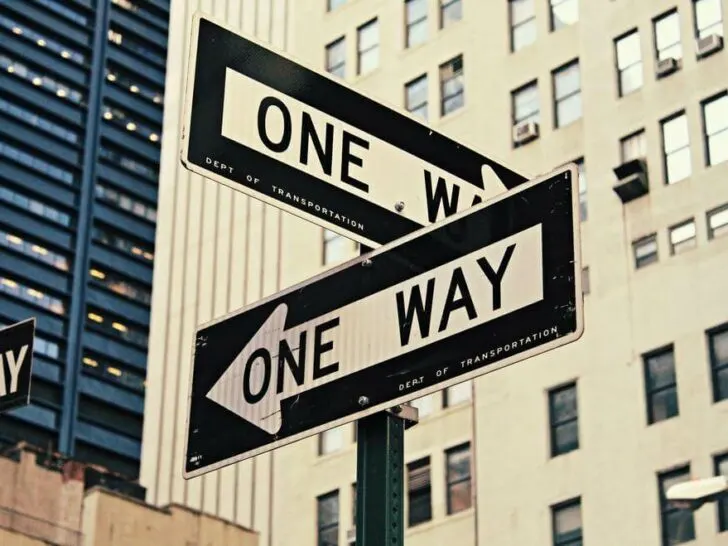A one-way street or one-way traffic refers to traffic that flows in only one direction. No vehicles are permitted to travel in the opposite direction. There are indications of this. On the other hand, a two-way road or two-way traffic means that the vehicle can travel in both directions; that is, you can go one way and return in the opposite direction.
Although we all know what one-way and two-way roads are, we sometimes need clarification. Some of us don’t obey these traffic rules and need help understanding the flashcards that refer to them. So, I will discuss the two types of roads and the rules we must follow to regulate the traffic and be responsible individuals.
I’ll discuss all the ambiguities most people have and will try my best to find a solution. You’ll get all the information you need in this article.
Let’s Get Started.
What is the distinction between a one-way and a two-way street?
A one-way street is one on which traffic is only allowed in one direction; to travel in the opposite direction, use the paired street beside it. These are always found in pairs adjacent to each other. Such arrangements are commonly used in central urban areas to relieve traffic congestion when there is no room for street widening or a popular ban exists.
A divided carriageway route or street is structurally a pair of one-way streets on the same road allowance, so imagine a pair of one-way streets as a dual carriageway road, with the median between filled with buildings such as offices, shops, apartments, or single-family homes.
What is a two-way road?
A two-way or divided highway is a type of highway with carriageways for opposing traffic separated by a central reservation or a median. Roads with two or more carriageways built to higher standards and controlled access are referred to as motorways, freeways, and so on rather than dual carriageways.
Regardless of the number of lanes, a road without a central reservation is a single-carriageway. Dual carriageways improve road traffic safety over single carriageways and, as a result, typically have higher speed limits.
In some places within a local-express-lane system, express and local/collector lanes increase capacity and smooth traffic flows for longer-distance travel.
How do you tell if a street is one-way?
In urban areas, one-way streets are common. The signs and markings on the road will help you identify one-way streets. On one-way streets, broken white lines separate traffic lanes.
A one-way street will not have yellow markings. Always choose the lane with the fewest hazards when driving on one-way streets with multiple lanes. The best flow is usually found in the middle lanes.
Follow the speed limit and keep a consistent speed with the traffic flow.
I think now we know the basic differences between these two types of roads and the pedestrian indications to identify one from another.
How do you tell if a road is two-way?
You can easily tell if a street is one-way or two-way. Just remember the flashcards and signboards, along with indications for different roads. Look down the street to see if there are any traffic signal lights.
If you only see the back of the signal lights, the street is one-way-going in the opposite direction.
Look for blinking or steady traffic control device lights, which are a common indicator that the street is two-way.
This was the most accurate identification of these streets.

What’s the distinction between “way” and “road”?
There is a significant difference between these two words.
The way does not exactly mean “road,” but it does function as an adverb and substantive, meaning away, which could be a shortcut, a path, or a course, as in Drive that way so that we can get there faster!
If you are reading a food recipe and it says, “Crack two eggs into the bowl and mix them for 5 minutes,” but you prefer to crack two eggs into the bowl for 2 minutes, it means you did it in your way, form, method, or manner.
“Road” refers to a street, highway, side street, path, course, or route. These are the various meanings of the word “road.”
For example, we like to take that road or a path because it is not dangerous and there aren’t many cars on it.
The examples always help you get a better understanding of a term. The same is the case with these two terms: way and road. You are quite familiar with the distinctions between the two, right?
Who has the right of way when turning left on a two-way street?
The vehicle turning left must yield to the vehicle proceeding straight. Both cars should be able to turn left simultaneously if they are both turning left.
Finally, if the car going straight has a stop sign but the car turning left does not, the car at the stop sign must stop. Thus, considering the sign and the right of way is very important.
What is the purpose of one-way streets?
Certain roads are designated as one-way for one or more reasons listed below.
- These roads may not be wide enough to accommodate two-way traffic.
- A two-lane, two-way road is also known as an urban or arterial road. It has a peak-hour capacity of 1,500 passenger car units (PCU), while a two-lane one-way road has a capacity of 2,400 PCU.
- As a result, more traffic can be accommodated on a one-way road if there is a parallel road to handle the opposing traffic flow.
A Passenger Car Unit (PCU) is a method used in Transportation Planning to assess the various vehicle types within a traffic flow group in a consistent manner. The typical factors are 1 for a car, 1.5 for light commercial vehicles, 3 for trucks and buses, 4.5 for multi-axle vehicles, and 0.5 for two-wheelers and cycles.
The capacities and measurements differ from the country-to-country.

Why not make every road a two-way street?
Roads may have adequate width at times, but when they intersect with another road, traffic conflicts impede the smooth flow of straight and right-turning vehicles.
As a result, some roads are made one way to avoid such conflicting points, due to which traffic conflict points are reduced. A four-arm intersection has 12 traffic conflict points, and by making one arm of the intersection one-way, two conflict points are avoided, making the traffic flow a little smoother.
There must also be a parallel road to accommodate the opposing traffic flow. Doing this can reduce the traffic load and avoid traffic jams.
What does it mean to have a two-lane single-carriageway?
A carriageway is one in which RCC and steel blocks divide lanes into two or more sections. The number of formed sections represents the carriageway.
If the road is divided by a single divider, it is a double carriageway; if the road is divided by two dividers, it is a triple carriageway; and if no divider is provided, it is a single carriageway.
While lanes are defined by the number of vehicles that move through the carriageway, solid or dotted lines on the road separate lanes.
If the road is single-carriageway, traffic will be bi-directional; if the road is double-carriageway, one carriageway will handle one side of traffic and the other will handle the opposite side of traffic.
For example, there is no such solid divider in a single-carriageway. Two lanes mean there are two separate lanes in a carriageway. There is only one divider in a double carriageway. It is placed between the grass section. There are two lanes on the carriageway.
If we do not express the number of carriageways, we count the total number of lanes considering both sides.
What’s the distinction between a road and a highway?
Any public road is referred to as a “highway.” There is debate about whether public roads were named highways because they were built higher than the surrounding land to avoid waterlogging or whether the term “highway” referred to a major road instead of a “byway,” a minor road.
"Highway" is a traditional term for a government-built road.
It was named after the fact that when the roads were first built, they were built on top of the surrounding land that was higher and thus they were referred to as the high way, as opposed to the other surface roads.
In research documents and federal guidelines, all roads are still called highways. The function of highways is distinguished by road classification in terms of traffic volumes, speeds, and widths.
All in all, all roads built by the government and higher than other lands are said to be highways.
Two-lane vs. Two-way roads
A road with two opposing lanes of unrestricted traffic is a two-way road. A two-lane highway is an unbroken highway with two lanes, one in each direction of travel.
Lane changing and passing is only possible during the oncoming traffic phase, not the opposing one. As traffic volume increases, so will the ability to pass.

Why do highways have to be one-way streets?
Most motorways in the United Kingdom are one wide strip of concrete with three lanes going each way, separated by a metal crash barrier in the middle. It may differ in various countries, though.
A road like that in the game would be nice because having two highways is always a pain and just looks messy.
When you start a new city, you must accommodate two one-way roads merging into something like a six-lane road, but it never looks right.
To avoid all the mess, a one-way street is necessary.
| Advantages of one-way Roads | Advantages of Two-way Roads |
| Better for the traffic flow | Two-way roads add value to a property or space |
| Easier to navigate your car around the town | Two-way roads provide a great solution for awkward intersections |
| Less dangerous and more comfortable | When driving on a two-way road, drivers tend to be more cautious, reducing the chances of collision. |
| One-way roads are safer for walking pedestrians | Such roads tend to be less confusing |
| One-way roads are safer for walking pedestrians | Two-way roads are better for the visibility of local businesses |
Final Thoughts
- One-way road: Traffic flows in one direction only; no opposite travel allowed.
- Two-way street: Vehicles can travel in both directions.
- One-way street: Marked by broken white lines, no yellow markings.
- Two-way street: Traffic signal lights visible, blinking or steady lights indicate two-way.
- “Way” implies a path, method, or manner.
- “Road” refers to a street, highway, or route.
- The vehicle turning left must yield to the vehicle proceeding straight.
- One-way streets reduce conflicts, accommodate more traffic, and avoid traffic jams. Two-way streets offer better visibility and benefit local businesses. Understanding these concepts enhances road safety.
Other Articles
- The Difference Between a Trapezoid & a Rhombus
- Highest Frame Rate Perceived By The Human Eye
- Black vs. White Sesame Seeds: A Flavorful Difference

